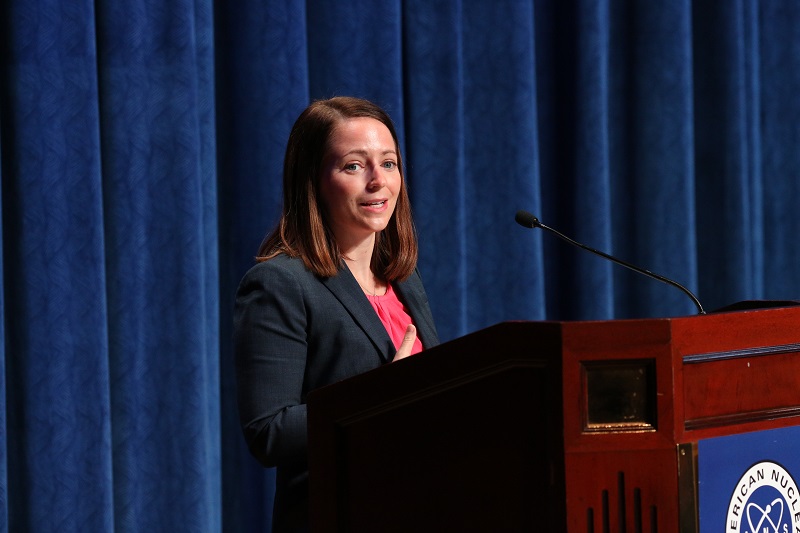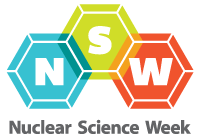A message from NV5, Inc.
Seconds Matter: Rethinking Nuclear Facility Security for the Modern Threat Landscape

A message from NV5, Inc.
Seconds Matter: Rethinking Nuclear Facility Security for the Modern Threat Landscape
I have generally been quite a skeptic about thorium as a source of nuclear fuel. Although I know that thorium was tried in the fuel at two very early commercial power reactors in the United States (Elk River, and Indian Point-1), the idea did not take off. The proposals to use thorium in fluid fuel reactors were far less successful, with none moving beyond the prototype stage. Even given the low success rate, it still remains that the use of thorium is promising.
This column was initially published in the October 16, 2014, issue of Fuel Cycle Week and is republished here with permission.

Jessica Lovering speaks at ANS 2014 Winter Meeting
Breakout sessions with three acknowledged experts in the areas of nuclear policy, nuclear plant operations, and nuclear regulation were the highlight of an innovative and engaging Opening Plenary at this year's ANS Winter Meeting
American Nuclear Society President Michaele Brady Raap has released a letter calling ANS members to action-and by "action," she means making comments to the Environmental Protection Agency on its Clean Power Rule. According to Brady Raap, "the rule as it is currently structured would almost entirely discount the clean energy contributions of our current nuclear energy facilities and effectively penalize states that have new plants under construction."
 The 233rd Nuclear Energy Blog Carnival has been posted at Next Big Future.
The 233rd Nuclear Energy Blog Carnival has been posted at Next Big Future.

Hinkley Point C - conceptual view. ©EDF
by Jim Hopf
 The 232nd Nuclear Energy Blog Carnival has been posted at The Hiroshima Syndrome.
The 232nd Nuclear Energy Blog Carnival has been posted at The Hiroshima Syndrome.
 The fifth and final day of Nuclear Science Week is all about Nuclear Medicine. Have you ever experienced a procedure at a hospital that employed radiation? Did you know that there are actually many different ways that nuclear technology is employed in medicine-and not just at your local hospitals?
The fifth and final day of Nuclear Science Week is all about Nuclear Medicine. Have you ever experienced a procedure at a hospital that employed radiation? Did you know that there are actually many different ways that nuclear technology is employed in medicine-and not just at your local hospitals?
 Day 4 of the annual National Nuclear Science week is all about Nuclear Safety.
Day 4 of the annual National Nuclear Science week is all about Nuclear Safety.
 The third day of National Nuclear Science Week is focused upon the production of energy by nuclear means-and that means energy that can do work for man. Electric power, steam for heating businesses and homes, and mechanical power for propelling ships are perhaps the best known examples of man's use of nuclear energy.
The third day of National Nuclear Science Week is focused upon the production of energy by nuclear means-and that means energy that can do work for man. Electric power, steam for heating businesses and homes, and mechanical power for propelling ships are perhaps the best known examples of man's use of nuclear energy.
 The second day of National Nuclear Science Week promotes the knowledge of careers in nuclear-related fields.
The second day of National Nuclear Science Week promotes the knowledge of careers in nuclear-related fields.
 Monday, October 20, marks the first official day of National Nuclear Science Week-a week long, annual coordinated educational event that promotes nuclear science and technology.
Monday, October 20, marks the first official day of National Nuclear Science Week-a week long, annual coordinated educational event that promotes nuclear science and technology.
• What - American Nuclear Society Winter Meeting 2014
This past week, a remarkable article was printed in The Atlantic, which gave a full first-person account of the initial trial run of the STR Mark I nuclear prototype plant-the plant that paved the way for the success of the first nuclear powered vessel ever built, the submarine USS NAUTILUS.
 The 229th Nuclear Energy Blog Carnival has been posted at Next Big Future.
The 229th Nuclear Energy Blog Carnival has been posted at Next Big Future.
Preface: Robert Rock, a Canadian professional who authored the post you're about to read, is relatively new to the field of nuclear communications but isn't new to communications overall. I believe it's good to get outside perspectives once in a while-they make us think about and reflect upon our own actions. I hope that his piece, specifically written for us here at ANS Nuclear Cafe, can provoke some discussion and help us develop new perspective. Your Editor, Will Davis.
I've been listening to an evangelical group of molten salt reactor enthusiasts for several years. Their pitch is attractive and they often make good arguments about the value of rethinking the light water reactor technology model, but most of the participants are unrealistic about the economic, material, technical, and regulatory barriers that their concepts must overcome before they can serve market needs.